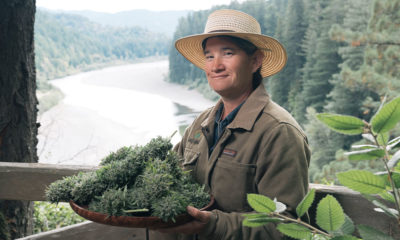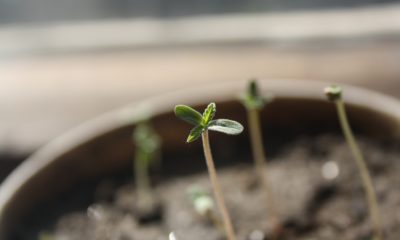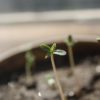Cultivation
Cannabis is Not to Blame for CA’s Drought
Photo by Gracie Malley
The press has been lapping up the allegations that marijuana cultivation in California is contributing to the state’s drought crisis like….well, water. The situation has led to local “urgency” ordinances naming the drought as an emergency and stepping up enforcement against medical marijuana gardens with the same claim. Police are issuing press releases tallying up the supposed water usage for eradicated cannabis crops which, like their dollar amounts, seem quite inflated.
It’s estimated by the Emerald Growers Association that, based on final yield, growing marijuana requires an average of one gallon of water per pound, per day. With a 150-day outdoor growing cycle, that amounts to 150 gallons per pound. Indoor growers have estimated their water use at 150-450 gallons per pound, including flushing.
With a pound weighing 454 grams, that means cannabis uses, at most, one gallon per gram and possibly only 1/3 that much. One joint is about a half a gram, so that the water needed to produce one joint is somewhere between 1/6 and ½ gallon.
How does this amount of water consumption compare to other crops or inebriants? According to reports, a glass of wine takes around 15 gallons of water per glass to produce; beer slightly less. A tomato requires 3.3 gallons of water, on average, while a handful of almonds (5) takes 5 gallons (one gallon per nut), and a ¼-pound hamburger requires 110 gallons. This chart compares the water consumption for single servings of different foods and beverages with that of cannabis, in gallons.
Cal NORML estimates that in-state annual consumption for California is about 2 million pounds or one billion grams. That figure could be multiplied by a factor of four to account for marijuana that is diverted out of state. At the high-end estimate of one gallon per gram, that means the cannabis crop in California, licit and illicit, uses around 12,000 acre-feet of water yearly. That compares favorably to tomatoes, which use 1.7 million acre-feet, grapes (2.2 million acre-feet) and almonds, which soak up 3.7 million acre-feet of water yearly.
Kristin Nevedal of Americans for Safe Access likes to put up a slide in her presentations showing what looks like one of the “problem” marijuana grows public officials are so concerned about: it’s got tree removal, road development, water diversion but it’s not a pot field, Nevedal points out: it’s a vineyard.
“It’s the difference between regulated and unregulated agriculture,” she says, because when vineyards do these things they file for a land conversion permit.
Both Fish and Wildlife and Regional Water Boards are starting to regulate water usage and discharge from marijuana gardens in California. A pilot program allows farmers to sign up for Expected Use permits, naming sources of ground water. Streambed Alternation permits are also being applied for by cannabis cultivators, Nevedal says.
Earlier this month, the North Coast Regional Water Quality Control Board held a public workshop in Eureka on their draft waste discharge requirements for activities associated with the cultivation of marijuana. Comments on the draft order are being taken until June 8 at [email protected]. The Regional Board is expected to consider the draft order at its Aug. 13 meeting in Santa Rosa.
Certainly, there are localized problems regarding water and cannabis cultivation in California. Cal NORML and other groups are in favor of sound environmental regulations and licensing of commercial-sized crops. But put into context, we can see that we can’t use the drought as an excuse to further vilify marijuana across the board.
What are your thoughts in cannabis cultivation and the drought in California? Tell us what you think below.



























